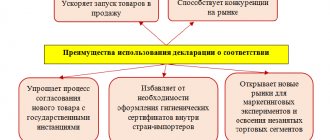Export is a type of foreign economic activity, the essence of which is the sale of goods to foreign partners to make a profit. When exporting goods from Russia as part of a foreign transaction, it is necessary to undergo export customs clearance. To do this, you will need to prepare a package of papers, pay duties and fees, and organize customs control of exported goods.
We are talking about a rather complicated manipulation that requires specific knowledge and connections for successful and prompt passage of the customs point during the sale and registration of the export declaration. The inability to navigate the intricacies of the process leads to loss of time, errors in payment calculations and other unpleasant moments. Saving money on professional customs clearance services in the Russian Federation results in considerable losses due to downtime.
Specialists will help you and your company collect the required documents when registering cargo and complete the paperwork quickly and with minimal material costs. Your prompt and unimpeded passage of customs control is the result of our well-coordinated and honest work.
Documents for customs clearance of exports
In order to release goods and cargo from Russia, the following documents must be provided to complete a customs declaration for export:
- contract on concluding a foreign economic transaction, all additions and appendices to it, specification (for supply);
- transaction passport or unique contract number (if the value of the transported goods is more than 6,000,000 rubles);
- invoice or invoice indicating the quantity, list of goods, partners’ details, other information (5 pieces);
- documents that confirm the fact of payment (prepayment) for goods under the contract (invoice, delivery note, etc.);
- transport document – international consignment note with the sender’s stamp;
- packaging (5 pieces);
- detailed description of the goods (technical description, instructions for use, etc.);
- permitting documentation (findings of FSTEC or FSVTS).
In addition to this mandatory list of documents, when customs clearance of goods for export, customs officers may require other papers that confirm the right to export cargo from the country.
Registration of a transaction passport
The first step in documenting export transactions is issuing a transaction passport (hereinafter referred to as the Transaction Passport). It is presented to the bank when making payments through the account of a Russian exporter opened with an authorized bank for goods exported from the customs territory of the Russian Federation under a foreign trade export contract. Documents to obtain a transaction passport must be submitted no later than the first currency transaction under the contract or other fulfillment of obligations under the contract. The foreign exchange transaction in this case can be either shipment under the contract or receipt of funds from the buyer, depending on what was done earlier. For each contract, one transaction passport is issued in one bank in the manner established in Bank of Russia Instruction No. 117-I dated June 15, 2004. To issue a transaction passport, you must submit to the bank : two copies of the PS, filled out in accordance with Appendix 4 to Instruction No. 117-I; contract (agreement), which is the basis for conducting currency transactions under the contract. In addition to the transaction passport, when making mutual settlements with a foreign counterparty, other documents must be submitted to the bank as a currency control authority. The deadlines for submitting documents for specific transactions are as follows: certificate of receipt of currency of the Russian Federation (2 copies) - no later than 15 calendar days following the month of receipt of currency of the Russian Federation received from a foreign counterparty; certificate of currency transactions (2 copies) - no later than 15 calendar days following the month of receipt of currency from the foreign counterparty; certificate of settlements through accounts abroad in the form established by the bank (2 copies), as well as copies of bank statements - no later than 45 calendar days following the month of debiting money from an account with a non-resident bank (crediting money to the account) under the contract with a foreign counterparty. When exporting goods from Russia, a certificate of supporting documents (2 copies), as well as supporting documents (customs declarations) are submitted - within a period agreed with the bank, not exceeding 15 calendar days from the day following the date of release of the exported goods specified in the customs declaration (the date of acceptance of the declaration is when goods are released before declaration). When fulfilling obligations under a contract in a way other than cash, a certificate of supporting documents (2 copies) and the supporting documents themselves, for example a bill of exchange, are also submitted - within a period agreed with the bank, not exceeding 15 calendar days after the date of execution of the documents, confirming the fulfillment of obligations in another way. The forms of these documents are given in the Bank of Russia Instruction No. 117-I dated June 15, 2004 and the Bank of Russia Regulation No. 258-P dated June 1, 2004. The transaction passport is issued before the currency transaction is carried out. After submitting the transaction passport and all necessary documents, the bank verifies them within three working days (clause 3.10 of Instruction No. 117-I). If all documents are completed correctly, both copies of the transaction passport are signed by the bank’s responsible person and certified by the bank’s seal, after which one of the copies of the transaction passport is returned to the resident.
Note! If the total amount of the loan agreement does not exceed the equivalent of 5,000 US dollars at the official exchange rate against the ruble established by the Bank of Russia on the date of conclusion of the loan agreement (in case of a change in the amount of the loan agreement - on the date of the last changes (additions) to the loan agreement providing for such changes ), there is no need to issue a transaction passport (clause 3.2 of Instruction No. 117-I).
Delivery
Cooperation with is not only a reliable, but also a fast alternative to independently processing documents and delivering cargo.
We organize door-to-door delivery - we will take care of choosing the transport scheme, issuing documents, and controlling the quality. Our employees submit documents exactly within the deadline established by law.
With our help, you release a batch of goods without delays - you make a profit on time.
Export registration
Get a free consultation
Call us or fill out the feedback form and our employees will contact you for a detailed discussion.
8 800 700 0952 Feedback
The procedure for customs clearance of exports
Customs clearance of exports from Russia includes a set of the following sequential actions, each of which is regulated by the Customs Code of the Customs Union:
- Presentation of goods to customs officers. The customs office must be notified of the arrival of the cargo. At the time of presentation of the goods, the carrier assumes full responsibility for them. Cargo that has passed the first stage is temporarily left under customs control.
- Registration of the declaration. The document must be submitted electronically or on paper with an electronic copy. The declaration includes information about the goods, the transaction, the owner and the recipient of the cargo. The document is submitted to customs in three copies. To confirm the legality of the operation, it is necessary to have a mark from customs and border authorities on each copy of the declaration.
- Making payments. Simultaneously with the registration of the TD, customs duties and fees are paid. Payments can be made by the declarant or any person who represents his interests. If it is impossible to pay the payments at once, the declarant can take a deferment or use installments for a period of no more than two months (including interest).
Filing a customs declaration
The second step in processing export transactions is customs formalities . Regulation of relations with customs authorities, as a rule, is entrusted to specialized organizations - customs brokers, but it is still necessary to prepare certain documents provided for by the Customs Code. The placement of goods under the customs procedure begins from the moment of submission to the customs authority of the customs declaration and (or) documents necessary for placing the goods under the customs procedure in cases provided for by the Customs Code. From January 1, 2011, when exporting goods, a declaration of goods (DT) in the form approved by the Decision of the Customs Union Commission dated May 20, 2010 N 257. In accordance with paragraph 1 of Art. 204 of the Federal Law of November 27, 2010 N 311-FZ “On Customs Regulation in the Russian Federation”, as a general rule, the declaration for goods is submitted in electronic form. As stated in paragraph 4 of Art. 322 of this regulatory act, until January 1, 2014, customs declarations are made in written or electronic form at the choice of the declarant. Permission from the customs authority for the departure of goods from the customs territory of the Customs Union is issued by affixing the corresponding marks of the customs authority on the customs declaration or other document allowing their export from the customs territory of the Customs Union, and on transport (transportation) documents. The declaration must have two marks affixed by the customs service: “ Release permitted ” - rates by an official of the customs authority in which the goods are registered (clause 3, clause 40 of the Instructions on the procedure for filling out the declaration for goods No. 257 and clause 39 of the Instructions on the procedure for filling out cargo customs declaration approved by Order of the Federal Customs Service of Russia dated September 4, 2007 N 1057); “ Goods exported ” - is marked by the border customs authority at the checkpoint through which the goods were exported outside the Russian Federation. There are several types of customs declaration, one of which is a goods declaration. It indicates the following basic information , including in coded form: 1) the declared customs procedure; 2) information about the declarant, customs representative, sender and recipient of goods; 3) about vehicles used for the international transportation of goods and (or) their transportation through the customs territory of the Customs Union under customs control; 4) about vehicles for international transportation and (or) vehicles on which goods were transported (will be transported) through the customs territory of the Customs Union under customs control; 5) information about the goods: name; description; classification code of goods according to the Commodity Nomenclature of Foreign Economic Activity; name of country of origin; name of the country of departure (destination); description of packages (quantity, type, marking and serial numbers); quantity in kilograms (gross weight and net weight) and in other units of measurement; customs value; statistical cost; 6) on the calculation of customs payments: rates of customs duties, taxes, customs fees; application of benefits; amounts of calculated customs duties, taxes, customs fees; exchange rate established in accordance with the legislation of a member state of the Customs Union and used to calculate customs duties in accordance with the Customs Code; 7) about the foreign economic transaction and its main conditions; on compliance with restrictions; 9) about the manufacturer of goods; 10) information confirming compliance with the conditions for placing goods under the customs procedure; 11) about the person who drew up the declaration for goods; 12) place and date of drawing up the goods declaration. Submission of a customs declaration must be accompanied by the submission to the customs authority of documents on the basis of which the customs declaration is completed . Let's consider the documents the submission of which is required by the Customs Code. 1. Documents confirming the authority of the person submitting the customs declaration . These can be employment contracts, orders of appointment to a position, if the customs declaration is submitted by an employee of the organization, a power of attorney to perform customs clearance actions. 2. Documents confirming the completion of a foreign economic transaction , and in the absence of one - other documents confirming the right of ownership, use and (or) disposal of goods, as well as other commercial documents available to the declarant. As a rule, such a document will be a foreign economic contract and other agreements signed with a foreign counterparty. 3. Transport (shipping) documents . For road transport, this document is either the International Consignment Note CMR (the document was introduced by the Convention on the Contract for the International Carriage of Goods by Road), or the consignment note (Form 1-T), approved Resolution of the State Committee of the Russian Federation on Statistics dated November 28, 1997 N 78. Both options are acceptable, which was confirmed by Letter of the Federal Customs Service of Russia dated July 2, 2010 N 04-34/32666. 4. Documents confirming compliance with prohibitions and restrictions . This type of documents includes licenses, sanitary and epidemiological reports, certificates of conformity and other permitting documentation for operations with certain types of goods, if any. 5. Documents confirming the country of origin of the goods . The heads of government of the CIS approved the Certificate of Origin of goods of the form ST-1 (Appendix 2, which is an integral part of the Rules approved by the Decision of the Council of Heads of Government of the CIS dated November 30, 2000). Chambers of commerce and industry have the right to certify certificates of origin of goods (clause “d”, paragraph 1, article 12 of the Law of the Russian Federation of July 7, 1993 N 5340-1 “On Chambers of Commerce and Industry in the Russian Federation”). 6. Documents on the basis of which the classification code of the product was declared according to the Commodity Nomenclature of Foreign Economic Activity . These include documents: a) containing information about the composition of the goods (if in the Commodity Nomenclature of Foreign Economic Activity, a note to a group, position or text of an item for a product establishes requirements for the content of any substances (elements), materials in the product); b) technological diagrams, technological instructions, description of the technological process and other documents containing information about processing processes and types of processing of goods (if the classification characteristic defined in the notes to the group, position or text of the position of the Commodity Nomenclature of Foreign Economic Activity is the type of processing of the goods or the degree processing of goods); c) drawings, block diagrams, technical data sheets, operating instructions, technological diagrams, user manuals and other technical documentation containing information about the technical characteristics of the product and the principle of its operation (if the classification criteria are defined in the notes to the group, position or text of the position The commodity nomenclature of foreign economic activity is weight, size, power, performance and other characteristics).
2) information about the declarant, customs representative, sender and recipient of goods; 3) about vehicles used for the international transportation of goods and (or) their transportation through the customs territory of the Customs Union under customs control; 4) about vehicles for international transportation and (or) vehicles on which goods were transported (will be transported) through the customs territory of the Customs Union under customs control; 5) information about the goods: name; description; classification code of goods according to the Commodity Nomenclature of Foreign Economic Activity; name of country of origin; name of the country of departure (destination); description of packages (quantity, type, marking and serial numbers); quantity in kilograms (gross weight and net weight) and in other units of measurement; customs value; statistical cost; 6) on the calculation of customs payments: rates of customs duties, taxes, customs fees; application of benefits; amounts of calculated customs duties, taxes, customs fees; exchange rate established in accordance with the legislation of a member state of the Customs Union and used to calculate customs duties in accordance with the Customs Code; 7) about the foreign economic transaction and its main conditions; on compliance with restrictions; 9) about the manufacturer of goods; 10) information confirming compliance with the conditions for placing goods under the customs procedure; 11) about the person who drew up the declaration for goods; 12) place and date of drawing up the goods declaration. Submission of a customs declaration must be accompanied by the submission to the customs authority of documents on the basis of which the customs declaration is completed . Let's consider the documents the submission of which is required by the Customs Code. 1. Documents confirming the authority of the person submitting the customs declaration . These can be employment contracts, orders of appointment to a position, if the customs declaration is submitted by an employee of the organization, a power of attorney to perform customs clearance actions. 2. Documents confirming the completion of a foreign economic transaction , and in the absence of one - other documents confirming the right of ownership, use and (or) disposal of goods, as well as other commercial documents available to the declarant. As a rule, such a document will be a foreign economic contract and other agreements signed with a foreign counterparty. 3. Transport (shipping) documents . For road transport, this document is either the International Consignment Note CMR (the document was introduced by the Convention on the Contract for the International Carriage of Goods by Road), or the consignment note (Form 1-T), approved Resolution of the State Committee of the Russian Federation on Statistics dated November 28, 1997 N 78. Both options are acceptable, which was confirmed by Letter of the Federal Customs Service of Russia dated July 2, 2010 N 04-34/32666. 4. Documents confirming compliance with prohibitions and restrictions . This type of documents includes licenses, sanitary and epidemiological reports, certificates of conformity and other permitting documentation for operations with certain types of goods, if any. 5. Documents confirming the country of origin of the goods . The heads of government of the CIS approved the Certificate of Origin of goods of the form ST-1 (Appendix 2, which is an integral part of the Rules approved by the Decision of the Council of Heads of Government of the CIS dated November 30, 2000). Chambers of commerce and industry have the right to certify certificates of origin of goods (clause “d”, paragraph 1, article 12 of the Law of the Russian Federation of July 7, 1993 N 5340-1 “On Chambers of Commerce and Industry in the Russian Federation”). 6. Documents on the basis of which the classification code of the product was declared according to the Commodity Nomenclature of Foreign Economic Activity . These include documents: a) containing information about the composition of the goods (if in the Commodity Nomenclature of Foreign Economic Activity, a note to a group, position or text of an item for a product establishes requirements for the content of any substances (elements), materials in the product); b) technological diagrams, technological instructions, description of the technological process and other documents containing information about processing processes and types of processing of goods (if the classification characteristic defined in the notes to the group, position or text of the position of the Commodity Nomenclature of Foreign Economic Activity is the type of processing of the goods or the degree processing of goods); c) drawings, block diagrams, technical data sheets, operating instructions, technological diagrams, user manuals and other technical documentation containing information about the technical characteristics of the product and the principle of its operation (if the classification criteria are defined in the notes to the group, position or text of the position The commodity nomenclature of foreign economic activity is weight, size, power, performance and other characteristics).
7. Documents confirming payment and (or) security for payment of customs duties (payment order, bank statement). 8. Documents confirming the declared customs value of goods and the chosen method for determining the customs value of goods . Often the issue of the customs value of goods is a “stumbling block” in disputes with customs authorities. Therefore, it is necessary to collect the most complete package of documents certifying the value of the goods. The list of documents will also depend on the procedure for determining the customs value, in particular: a) when determining the customs value using the “according to the value of the transaction with exported goods” method: constituent documents of the declarant; foreign trade purchase and sale agreement (paid supply agreement), current annexes, additions and amendments to it; invoice (invoice); waybill; bank payment documents (if the invoice is paid), as well as other payment documents reflecting the cost of the goods; quotes from world exchanges in the event that exchange-traded goods are exported; insurance documents, if any, depending on the terms of the transaction; a transportation agreement (a transport expedition agreement, if such an agreement was concluded), an invoice (invoice) for transportation (transportation), bank payment documents (if such invoices are paid) or accounting documents reflecting the cost of transporting goods (if the goods were transported by our own transport declarant), carried out for the export of goods from the customs territory of the Russian Federation, and for subsequent transportation (transportation) in cases where the declarant claims deductions of these expenses from the price actually paid or payable; bank payment documents confirming the payment of duties, taxes and fees levied in the Russian Federation in connection with the export of the goods being valued, subject to deductions of the specified amounts from the price actually paid or payable; agreement on the provision of intermediary services (agency agreement, commission agreement, agreement on the provision of brokerage services), invoice (invoice), bank payment documents for the provision of intermediary services, depending on the terms of the foreign trade agreement; contracts, invoices (invoices), proforma invoices, accounting documents, customs declarations issued by the customs authorities of the Russian Federation (if these goods are imported into the customs territory of the Russian Federation), and other documents on the cost of goods and services provided by the buyer free of charge or at reduced prices for use in connection with the production and sale for export from the Russian Federation to the country of destination of exported (exported) goods, if the provision of such goods and services is provided for by a foreign trade transaction and their cost is not included in the price actually paid or payable for the exported goods; license agreement, invoice, bank payment documents, accounting and other documents containing information about payments for the use of intellectual property that relate to exported goods (if these payments are provided for by the terms of sale of exported goods); documents (including accounting) and information containing data on the amount of income that is directly or indirectly due to the seller as a result of subsequent sale, disposal in another way or use of imported goods (if this is provided for by the terms of the foreign trade transaction); contracts, invoices, bank payment documents on the cost of containers, packaging, including the cost of packaging materials and packaging work, if these costs were incurred by the buyer, but were not included in the price actually paid or payable for the imported goods (if this is provided for by the conditions foreign trade transaction); b) when determining the customs value by the method “based on the transaction value of identical (homogeneous) goods”: documents in accordance with which customs clearance of identical (homogeneous) goods was carried out, the customs value of which was determined based on the transaction value of exported goods and accepted by the customs authority: cargo customs declaration, foreign trade agreement (contract) and additional agreements thereto, invoice and other commercial documents, as well as documents and information that were submitted by the declarant to confirm the customs value of identical (similar) goods (including additional documents and information); documents and information confirming the validity and accuracy of the cost adjustment, taking into account differences in the commercial level (wholesale, retail and other) and (or) quantity, transportation costs (transportation) carried out for the export of goods from the customs territory of the Russian Federation and its further transportation ( if such adjustments have been made); c) when determining the customs value using the addition method: accounting documentation of the manufacturer of the goods being valued, containing information on the costs of manufacturing or purchasing materials, production costs, as well as other operations related to the production of exported goods (including costs for containers and packaging, including the cost of packaging materials and packaging work), commercial accounts of the manufacturer of the goods being valued, compiled in accordance with accounting principles generally accepted in the Russian Federation; accounting documentation of the manufacturer and (or) exporter containing information on the amount of profit, commercial and administrative expenses (price premium) that are incurred in the Russian Federation for export to the same country to which the goods being valued are exported; contracts, invoices (invoices), proforma invoices, accounting documents, import cargo customs declaration (subject to the import of the following goods into the customs territory of the Russian Federation) and other documents on the cost of goods and services provided by the buyer free of charge or at reduced prices for use in connection with the production and sale for export from the Russian Federation to the country of destination of exported (exported) goods; d) when determining the customs value using the reserve method: depending on the basis chosen for determining the customs value, the documents and information listed in paragraphs. "a" - "b"; copies of the first (cover indicating the name and date of the source of information) and corresponding sheets of independent public sources of information containing information on prices at which goods of the same class or type as those being valued are sold or offered for sale from the Russian Federation for export to that or the period corresponding to it, during which the goods being valued are exported from the customs territory of the Russian Federation; published or sent price lists for goods or trade offers from companies for supplies from Russia for export of specific goods and their prices, as well as quotes from world exchanges; rental, leasing, barter, donation and other agreements containing information on the cost of exported goods; proforma invoices, specifications containing the valuation of goods; insurance documents; a report on the assessment of goods carried out in the prescribed manner by an organization authorized in the field of assessment activities in accordance with the legislation regulating assessment activities in the Russian Federation. 9. A document confirming compliance with the requirements in the field of currency control in accordance with the currency legislation of the member states of the Customs Union, namely: transaction passports, certificates of currency transactions, other currency control documents. When declaring goods through customs, original documents or copies thereof are presented. The customs authority has the right to verify the compliance of copies of submitted documents with their originals in cases established by the legislation of the member states of the Customs Union. A customs declaration for goods exported from the customs territory of the Customs Union is submitted before their departure from the customs territory of the Customs Union. From the moment the customs declaration is registered by the customs authority, the declarant becomes obligated to pay export customs duties in respect of goods placed under the customs export procedure . Export customs duties are payable before the goods are released in accordance with the export customs procedure.
Benefits of working with us
General Import makes foreign economic activity simple and profitable for you. With us it is convenient, reliable and always effective. Among the undeniable advantages of the company:
- A rich experience. We have been working in the market for more than 10 years, processing 150 or more declarations per month. There is no place for administrative violations in our history - we use only legal schemes and provide only white closing documents;
- Expertise. Your transaction is accompanied by specialists with extensive experience in the ILO and DVTU.
- Wide range of services. We are responsible for expert support of your business in all areas - extensive consultations, customs clearance, document flow, interaction with authorities.
- Efficiency. We will calculate the customs value in just an hour, complete the declaration in 1-3 days, and calculate the cargo delivery routes that are “comfortable” for you in terms of price.
- Reliability. Our company's professional liability is insured. We work with any exported goods, including complex and project cargo.
- Great prices. We place a rate 2-4 times lower than the customs grid that our competitors use.




